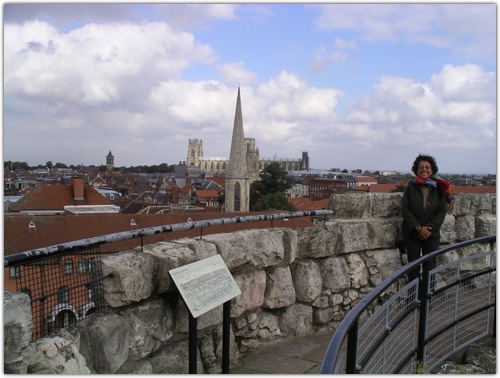|
I was completely overwhelmed by the multiplicity of historical treasures which I saw. I’d like to mention five of them:
- the splendid temporary exhibition, which the City of York has dedicated to ‘its’ Roman Emperor Constantine the Great 1700 years after his proclamation at Eboracum (York) to this dignity. The exhibition allows a very useful insight into the Roman world of Constantine’s day and which provides us with key information about his Edict of (reciprocal) religious tolerance: no blood shedding on whichever side was to be allowed.
- Within the same museum there is a permanent exhibition dedicated to York’s history, from the beginning of the Roman settlements until the end of the Middle Ages.
- Also the Undercroft of the York Minster reveals subsequent important archeological strata from the above-mentioned period of time.
- The ruins of Whitby Abbey bear fascinating witness of how out of the dark ages of barbarian invasions a new Anglo-Saxon civilisation developed. I mention only one name linked to Whitby: Caedmon, the simple peasant, who by elevating his chants to God gave impetus to a new literature: the Anglo-Saxon one!
- Having reached the end of my list, how could I forget Fairfax House? The moving history of a tragic family reappears to us in the richly decorated interiors of this splendid Georgian building.
And with this last piece of (Neo)classical architecture the circle of an autonomous Nordic culture, which arose to a height comparable with that of its first (Classical) conqueror is therefore completed, i.e. is perfect.
|

